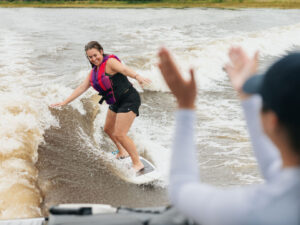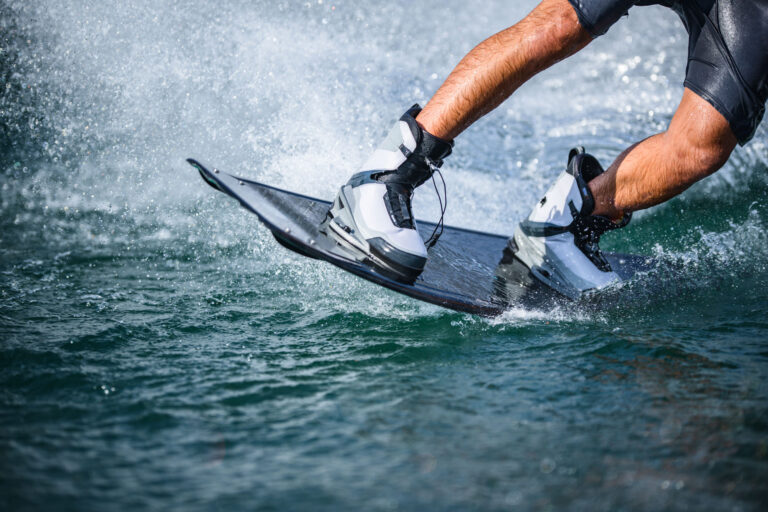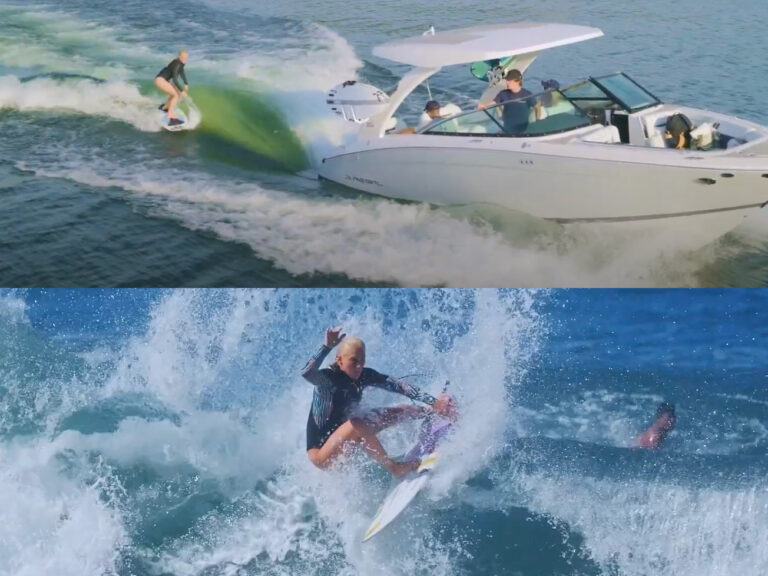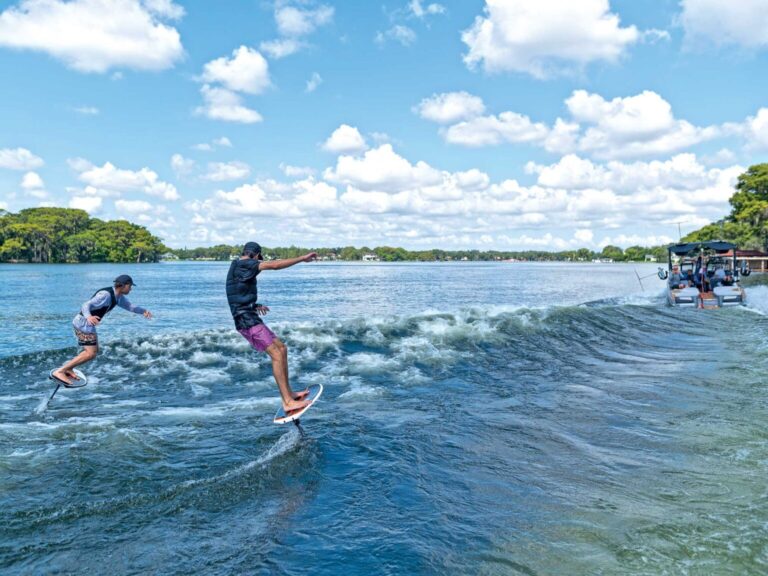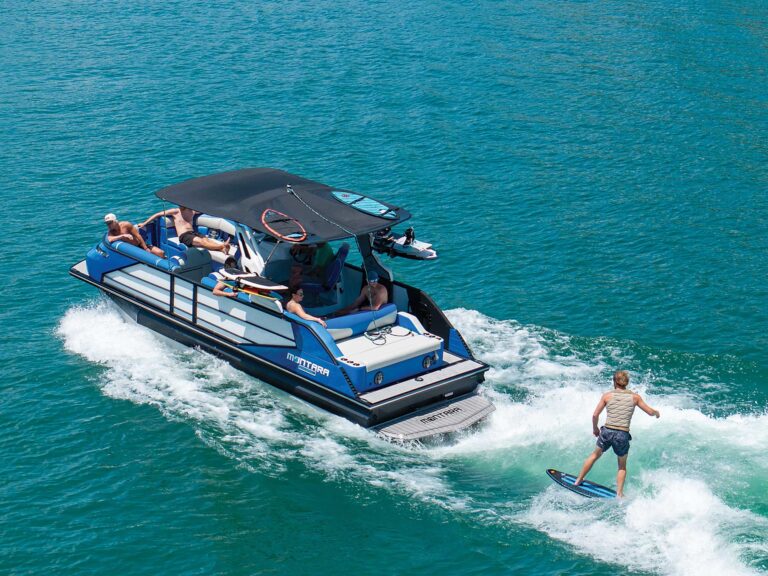Nearly 99 percent of the people learning back rolls come to us having the same problems in the air, but the problems really originate at the wake. Before you learn to do a back roll right, you have to take a step back, learn to turn slowly, edge through the wake, and feel the energy. Realize how little work you have to do to go big. Once you get that solved, the back roll will come easily.
The Correct Way
1. Slow, drifting turn, relax, take your time. Again – SLOW, TAKE YOUR TIME!
2. Build a progressive edge as you come into the wake.
3. Have your maximum edge here. Stand tall as you edge through the top of the wake.
4. Head is up (although upside down); eyes are open. Head, chest and hips are still up, starting to look for the water.
5. Spot the water. If you are early or late, you can adjust your speed by moving the handle.
6. Land.
Going flat.
Tension and edging give you lift off the wake. Here he’s flattened out and lost his edge. Remember, the wake isn’t a ramp to jump off. It’s something off which to harness energy by hitting the wake on edge and standing tall with a tight rope.
Don’t pull out as wide but try to generate the same speed. This will help you stay on edge.
Premature pop:
When you cut hard on the outside and throw the trick before you get to the top of the wake, you miss the pop, causing a fast and low rotation.
Remember to stand tall all the way through the wake and don’t start the trick until you are in the air.
The Mexican – a wrong-axis roll.
Kyle’s throwing his head, hips and shoulders down and away from the boat, pushing off his toes instead of his heels, and throwing the board behind him instead of to his side. His roll is 90 degrees off axis.
Throw your head, chest and hips up, pushing off your heels.


